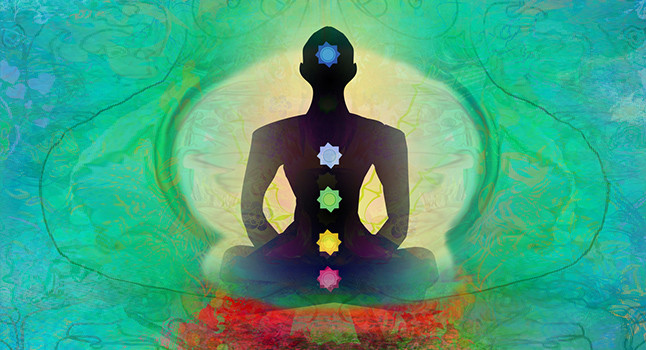Kundalini Meditation for Stress Relief and Emotional Healing

Are you feeling overwhelmed by stress and in need of emotional healing?
Look no further than Kundalini meditation. This powerful practice has been scientifically proven to provide stress relief while also addressing emotional imbalances. By activating your Kundalini energy and utilizing breathwork, mantras, and chanting, you can achieve a state of emotional balance and inner peace.
In this article, we will guide you through techniques for integrating Kundalini meditation into your daily routine for maximum stress relief and emotional healing.
Key Takeaways
- Kundalini meditation combines breathwork, mantra chanting, and physical movements.
- Regular practice of Kundalini meditation reduces stress levels.
- Kundalini meditation promotes emotional balance and overall well-being.
- Kundalini meditation activates the body’s natural healing mechanisms.
Understanding Kundalini Meditation
Understanding Kundalini meditation can help you find relief from stress and promote emotional healing. Kundalini meditation is a powerful practice that combines breathing techniques, mantra chanting, and physical movements to awaken and activate your Kundalini energy.
The Kundalini energy, often depicted as a coiled serpent at the base of your spine, is believed to be the dormant spiritual energy within you. By understanding Kundalini techniques, you can unlock this energy, allowing it to flow freely through your body and bring about numerous benefits.
Regular practice of Kundalini meditation can help reduce stress levels, increase self-awareness, enhance creativity, improve focus and concentration, and promote emotional balance. It can also help release negative emotions, heal past traumas, and cultivate a deep sense of inner peace and well-being.
The Science Behind Stress Relief
When it comes to understanding stress relief, it is important to consider the hormonal impact on stress and the neurological response to stress. Your body releases stress hormones such as cortisol and adrenaline in response to stressful situations, which can have a detrimental effect on your overall well-being.
Additionally, stress can also affect your brain and nervous system, leading to symptoms such as anxiety and mood disorders. However, by practicing stress reduction techniques, you can not only regulate your hormonal response to stress but also improve your neurological health.
Hormonal Impact on Stress
The hormonal impact of stress can be reduced through regular kundalini meditation practice. When you experience stress, your body releases cortisol and adrenaline, which can have negative effects on your overall well-being.
However, by practicing kundalini meditation, you can regulate your hormones and manage stress more effectively. Kundalini meditation has been shown to reduce levels of cortisol, the stress hormone, and increase levels of oxytocin, the hormone responsible for feelings of love and connection.
This hormonal regulation can lead to a greater sense of calm, improved mood, and enhanced emotional healing. By incorporating kundalini meditation into your stress management techniques, you can take control of your hormones and experience greater peace and balance in your life.
Neurological Response to Stress
Neurological response to stress can be affected by regular kundalini meditation practice, as it helps regulate hormone levels. When you engage in kundalini meditation, your brain releases endorphins, which are natural painkillers that boost your mood and reduce stress. This can lead to a calmer and more balanced neurological response to stressors in your life.
In addition to regulating hormone levels, kundalini meditation also has a profound impact on your emotional well-being. Through meditation, you can develop a heightened sense of self-awareness, allowing you to recognize and manage your emotions more effectively. This can help you navigate through challenging situations with greater ease and resilience.
Benefits of Stress Reduction
Incorporating regular kundalini meditation into your daily routine can lead to a positive shift in your response to stress, enhancing your overall well-being. By practicing this ancient technique, you can experience a multitude of benefits, including improved hormonal regulation and the ability to cultivate mindfulness in your everyday life.
Through kundalini meditation, you can tap into the power of your breath and movement to activate your body’s natural healing mechanisms. This practice has been shown to reduce the levels of stress hormones, such as cortisol, in your body, promoting a sense of calm and relaxation. As you become more aware of your body and mind during meditation, you develop mindfulness techniques that allow you to respond to stressors in a more balanced and centered way.
By incorporating kundalini meditation into your daily routine, you can experience the transformative effects of hormonal regulation and mindfulness techniques, leading to a more harmonious and fulfilling life.
| Benefits of Kundalini Meditation | ||
|---|---|---|
| Improved hormonal regulation | Enhanced mindfulness techniques | Reduced stress levels |
Exploring the Connection Between Emotions and Healing
By exploring the connection between emotions and healing, you can better understand the role of kundalini meditation in stress relief and emotional healing. Emotions play a crucial role in our physical health, as they have the power to affect our overall well-being. Kundalini meditation provides a powerful tool to release and manage these emotions effectively.
- Emotions and Physical Health: Emotions can have a direct impact on our physical health. Stress, for example, can lead to various health issues such as high blood pressure and weakened immune system.
- Emotional Release Techniques: Kundalini meditation offers techniques to release and process emotions in a healthy way. It allows you to delve deep into your emotions and release any negative energy that may be stored within.
- Stress Relief and Emotional Healing: Through kundalini meditation, you can experience profound stress relief and emotional healing. It helps you connect with your inner self, promoting emotional balance and overall well-being.
Techniques for Activating Kundalini Energy
To activate your kundalini energy, you can try practicing deep breathing exercises and visualizations that focus on channeling and awakening the dormant energy within you.
Kundalini meditation techniques can be a powerful way to tap into this energy and experience its transformative effects.
One technique you can try is the ‘Breath of Fire,’ where you rapidly inhale and exhale through your nose while focusing on the energy rising from the base of your spine.
Another technique is the ‘Snake Visualization,’ where you imagine a coiled snake at the base of your spine, slowly uncoiling and rising up through each energy center, bringing vitality and awakening to each part of your being.
Harnessing the Power of Breathwork in Meditation
When it comes to harnessing the power of breathwork in meditation, you’ll discover that your breath can be an incredible source of energy. By focusing on your breath and taking deep, intentional breaths, you can tap into a wellspring of vital life force energy that can invigorate and rejuvenate your entire being.
As you calm your mind and bring your attention to your breath, you’ll find that it becomes a powerful tool for healing, helping to release stress and tension from your body and promote a sense of inner balance and peace.
Breath as Energy Source
The breath plays a significant role in kundalini meditation. It serves as an energy source for stress relief and emotional healing. As you focus on your breath, you tap into the power of energy visualization. This allows the energy to flow through your body and release any tension or negative emotions. Through breathwork techniques, you can harness the transformative energy within you.
Here’s how the breath acts as an energy source in kundalini meditation:
- Deep inhales and exhales: Each breath you take brings in fresh energy and releases stagnant energy. This creates a sense of renewal and rejuvenation.
- Conscious breathing: By mindfully engaging with each breath, you can direct the flow of energy to specific areas of your body. This promotes healing and balance.
- Breath retention: Pausing between inhales and exhales allows you to fully absorb the energy. It also helps you experience a profound sense of calm and clarity.
Calming the Mind
Now that you understand the power of your breath as an energy source, let’s explore some calming techniques to quiet your mind and find inner peace.
Mindfulness exercises can be incredibly effective in achieving a state of calmness. By focusing your attention on the present moment, you can quiet the constant chatter of your mind and bring yourself into a state of relaxation.
One popular mindfulness exercise is called the body scan, where you mentally scan your body from head to toe, noticing any areas of tension and consciously releasing them.
Another technique is deep breathing, where you take slow, deep breaths, focusing on the sensation of the breath entering and leaving your body.
These calming techniques can help you find tranquility amidst the chaos of daily life.
Healing Through Breath
By practicing deep breathing and mindfulness exercises, you can tap into the healing power of your breath. Breathwork techniques can help you harness the mind-body connection and promote emotional healing.
Here are three ways your breath can bring about healing:
- Relaxation: Deep breathing activates the body’s relaxation response, calming your nervous system and reducing stress levels.
- Energization: Focusing on your breath can increase oxygen flow, boosting energy levels and revitalizing your body and mind.
- Emotional Release: Your breath can serve as a tool to release pent-up emotions and facilitate emotional healing.
Through conscious breathing, you can cultivate a greater sense of well-being and balance in your life. Remember, your breath is always with you, ready to support and heal you.
Take a moment to connect with your breath and experience its transformative power.
Mantras and Chanting for Emotional Balance
Take a deep breath and let the soothing vibrations of chanting mantras guide you towards emotional balance.
Mantras for anxiety relief and chanting for emotional healing have been practiced for centuries as powerful tools to calm the mind and restore inner peace.
As you repeat these sacred sounds, you tap into the healing energy within, allowing it to flow freely throughout your body, mind, and spirit.
The rhythmic repetition of these mantras creates a harmonious vibration that resonates with your being, releasing tension, anxiety, and negative emotions.
As you chant these mantras, focus on the present moment and let go of any worries or distractions.
Allow the vibrations to penetrate your being, bringing a sense of serenity and tranquility.
Embrace the power of mantras and experience the profound healing they can bring to your emotional well-being.
Integrating Kundalini Meditation Into Your Daily Routine
Embrace the transformative power of integrating Kundalini meditation into your daily routine and discover a deeper connection to your inner self. By incorporating this ancient practice into your life, you can experience profound benefits and a sense of inner peace.
Here are three reasons why integrating Kundalini meditation into your daily mindfulness practice is essential:
- Awaken your energy: Kundalini meditation activates the dormant energy within you, allowing it to rise through the chakras and bring balance to your mind, body, and spirit.
- Enhance self-awareness: Regular practice of Kundalini meditation helps you become more attuned to your thoughts, emotions, and physical sensations, enabling you to navigate life with mindfulness and clarity.
- Cultivate inner strength: Through Kundalini meditation, you can develop resilience, discipline, and a deep sense of self-worth, empowering you to overcome challenges with grace and poise.
Integrating Kundalini meditation into your daily routine can be a powerful tool for personal growth and self-discovery. Start your journey today and experience the profound transformation it can bring to your life.
Frequently Asked Questions
How Long Does It Take to Experience the Benefits of Kundalini Meditation for Stress Relief and Emotional Healing?
It typically takes some time to experience the benefits of kundalini meditation for stress relief and emotional healing. The effectiveness of kundalini meditation may vary, but with regular practice, you can start feeling the positive effects.
Can Kundalini Meditation Help With Specific Emotional Issues, Such as Anxiety or Depression?
Kundalini meditation can help manage specific emotional issues like anxiety and depression. It promotes mental well-being and provides tools for addressing and relieving these challenges. Try Kundalini meditation for emotional healing.
Are There Any Potential Side Effects or Risks Associated With Practicing Kundalini Meditation?
There may be potential risks and side effects associated with practicing Kundalini meditation. It is important to take precautions, be aware of contraindications, and consider the duration and effectiveness of your practice.
Are There Any Specific Postures or Positions That Are Recommended for Practicing Kundalini Meditation?
To practice Kundalini meditation effectively, it’s important to know the recommended postures and positions. Beginners’ tips include sitting in a comfortable position, keeping your spine straight, and relaxing your body and mind.
Can Kundalini Meditation Be Practiced by People of All Ages and Fitness Levels?
Yes, Kundalini meditation can be practiced by people of all ages and fitness levels. It offers various benefits for children, such as improved focus and emotional regulation, and for seniors, like increased vitality and mental clarity.









